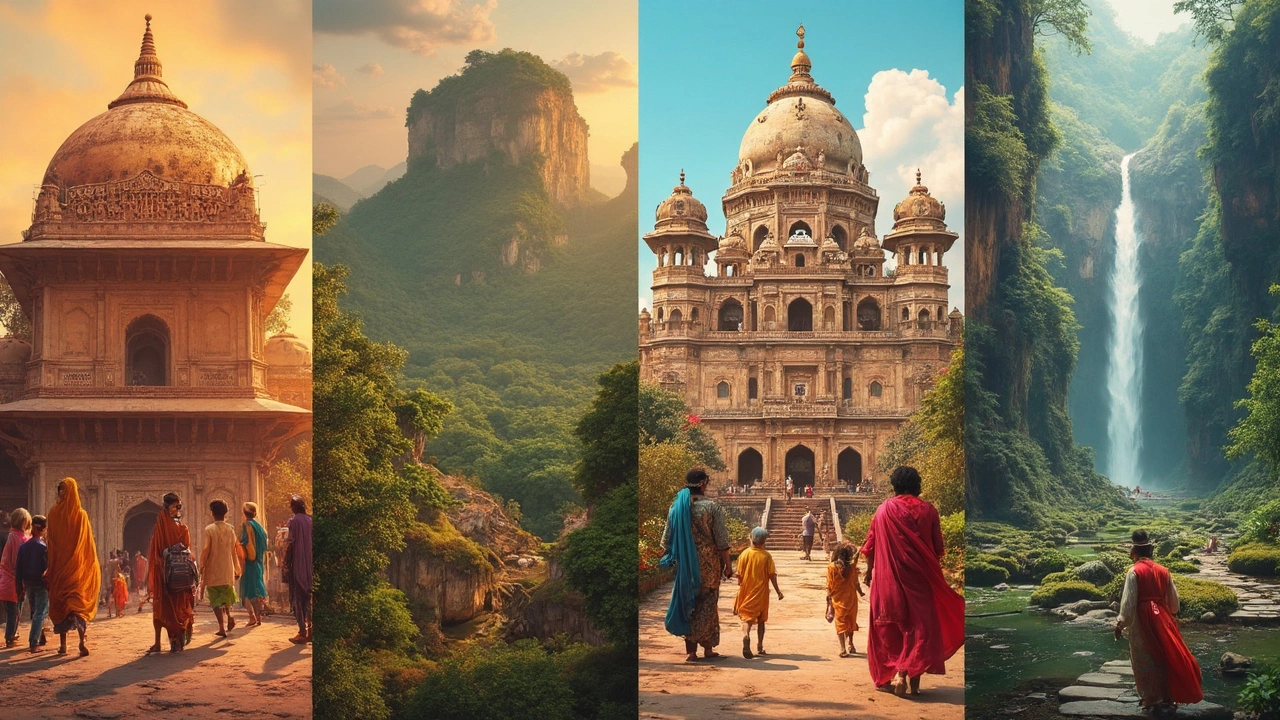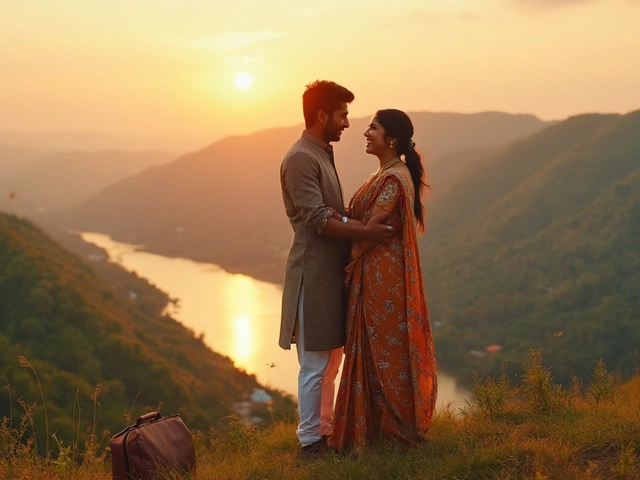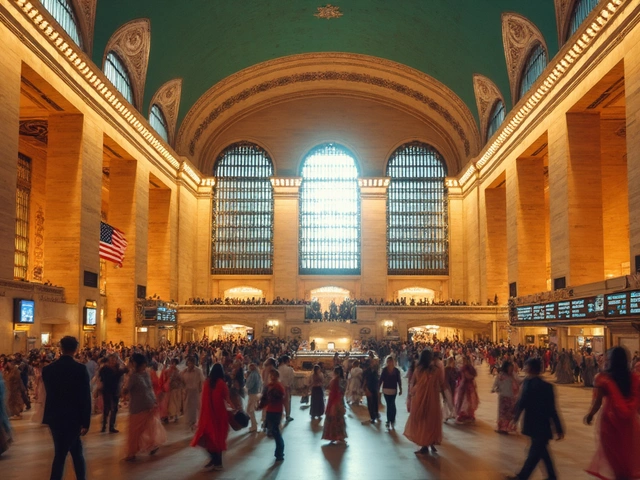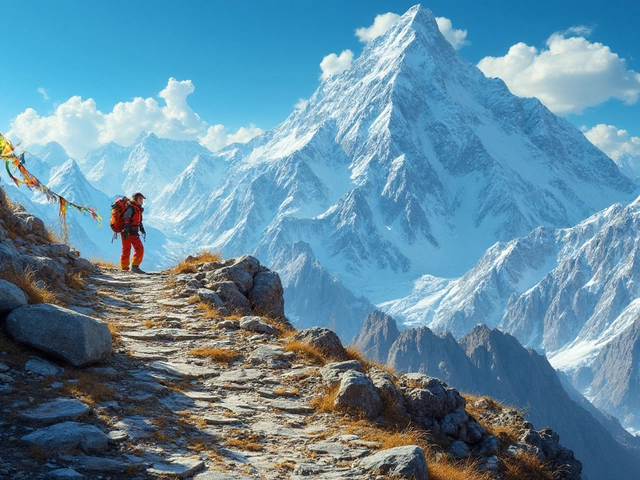Heritage in India isn’t just a buzzword for history lovers or travelers. It’s a living thing, shaping how people eat, talk, dress, and even argue over tea. Most folks think heritage is all about old palaces, but there’s a lot more happening under the surface.
Officially, heritage sites in India fall into three types—each one with its own vibe and stories. This split makes it easier for locals and visitors to understand why sites like the Taj Mahal, Kaziranga National Park, or the famous Western Ghats all matter—and why they're protected.
If you’re stuck choosing between a safari and a temple tour, knowing these types comes in handy. Plus, each category reveals a completely different side of the country. Ever wondered why some sites make it to the UNESCO list and others don't? That usually comes down to what kind of heritage they represent. So, whether you’re looking up your next road trip or just curious about what makes India’s past tick, getting a grip on these three types is a game-changer.
- Understanding the Concept of Heritage in India
- Cultural Heritage: More Than Just Monuments
- Natural Heritage: India’s Untouched Wonders
- Mixed Heritage: Where Nature and History Meet
Understanding the Concept of Heritage in India
If you ask ten people what "heritage" means in India, you’ll probably get ten different answers. Some folks point straight to the cultural heritage—famous forts, spicy street food, epic music, and colorful festivals. For others, it’s the wild tigers, ancient forests, and massive rivers, part of what’s called natural heritage. There's also a sweet spot where nature and history come together—these are "mixed" heritage sites.
In India, a site usually gets the official "heritage" label if it packs a punch for identity, history, or the environment. The Archaeological Survey of India (ASI) and UNESCO help draw the lines. As of early 2025, India has 42 UNESCO World Heritage Sites, which is the sixth-highest in the world. That number keeps growing as more spots earn global attention.
Heritage isn’t frozen in time. It can be a centuries-old tradition, like Holi celebrations, or a spot as big as the Sundarbans. The big idea: heritage is whatever molds India’s present, keeps past stories alive, or gives a serious reason for protection.
- Cultural heritage: Includes things created by humans—temples, palaces, ancient cities, dance, music, even food.
- Natural heritage: Think landscapes, rare plants, animals, and spectacles like the Himalayas or Valley of Flowers.
- Mixed heritage: These places are double-threat. They're valued for both natural wonders and manmade history, like Khangchendzonga National Park.
There’s no secret code. Heritage sites are chosen because they stand out in the world, not just in India. Recognizing this helps us see why some sites get crowded with tourists and others are off the radar, but equally important.
| Heritage Type | Big Example in India |
|---|---|
| Cultural | Taj Mahal, Jaipur City |
| Natural | Kaziranga National Park, Western Ghats |
| Mixed | Khangchendzonga National Park |
Cultural Heritage: More Than Just Monuments
When people talk about cultural heritage in India, most picture big forts, grand palaces, and ancient temples. But honestly, cultural heritage is a lot broader—it covers traditions, crafts, festivals, music, dance, even old recipes that families pass down. This type of heritage tells the story of how people have lived, celebrated, and built their world across thousands of years.
India actually has the sixth highest number of UNESCO heritage sites in the world as of 2025, many of which fall under the cultural label. Spots like the Taj Mahal in Agra, the Qutub Minar in Delhi, and the Sun Temple in Konark are the headline acts. But if you scratch beneath the surface, there are hundreds of lesser-known gems. Have you heard about the Great Living Chola Temples in Tamil Nadu or the group of Victorian Gothic and Art Deco buildings in Mumbai? They’re on the heritage list too.
Cultural heritage isn’t just about brick and mortar. Think of traditional Indian dance forms like Bharatanatyam or Kathak, handwoven Banarasi sarees, and puppet shows in Rajasthan. These intangible pieces are passed on from one generation to another, shaping people’s lives in ways that photos or Wikipedia lists just can’t explain.
- If you’re into food, things like the Hyderabadi biryani, Bengali sweets, or Goan vindaloo are living parts of cultural heritage—they hold stories, family secrets, and sometimes even blood feuds.
- Festivals like Diwali, Holi, and Onam are more than holidays—they're snapshots of belief, culture, and local history that glue communities together.
- Languages and scripts, whether it’s ancient Sanskrit texts or the handwritten Urdu poetry of old Delhi, are also protected as cultural treasures.
People sometimes forget these living aspects need just as much protection as monuments. Huge efforts go into restoring old structures, but there are also programs in India for safeguarding folk songs, old-school art forms, and rare crafts. For example, the government and groups like INTACH (Indian National Trust for Art and Cultural Heritage) run workshops and training for artisans whose skills are at risk of fading out.
Quick tip: If you want to experience the heart of Indian cultural heritage, don’t limit yourself to the big-ticket sites. Check out local markets, talk to craftspeople, or catch a street performance in a smaller town—it’s the daily stuff that’ll stick with you for years.
| UNESCO Cultural Sites | State | Year Inscribed |
|---|---|---|
| Taj Mahal | Uttar Pradesh | 1983 |
| Konark Sun Temple | Odisha | 1984 |
| Red Fort Complex | Delhi | 2007 |
| Hill Forts of Rajasthan | Rajasthan | 2013 |
So, yeah, Indian cultural heritage goes way beyond the famous postcards. It's everywhere, in the everyday stuff people do, make, eat, and celebrate—if you know where to look.

Natural Heritage: India’s Untouched Wonders
When it comes to natural heritage, India is loaded with surprises most travelers don’t expect. These aren’t just pretty places; these sites show off Earth’s original work—like forests so thick you lose phone signal or valleys with plants seen nowhere else. The government and groups like UNESCO work hard to keep these spots as untouched as possible because what grows or lives there is often rare worldwide.
Let’s talk big names first. The Kaziranga National Park in Assam is a wildlife superstar, famous for having more than two-thirds of the entire world population of one-horned rhinos. That’s right, you won’t see that anywhere else on the planet. Then there’s the Western Ghats, which runs down the west side of India—think lush hills, crazy waterfalls, and more than 7,400 species of flowering plants. Fragile frogs, endangered birds, and wild orchids call this region home.
If you think nature’s best stuff is just about cool animals and mountain views, check these numbers out:
| Natural World Heritage Site | State(s) | Known for |
|---|---|---|
| Great Himalayan National Park | Himachal Pradesh | Rare mammals like snow leopard, alpine scenery |
| Sundarbans National Park | West Bengal | World’s largest mangrove forest, Bengal tigers |
| Keoladeo National Park | Rajasthan | Migratory birds, wetlands |
| Nanda Devi and Valley of Flowers | Uttarakhand | Meadows of endemic alpine flowers, diverse fauna |
Most heritage sites in India that fall under the natural category can only be visited at certain times of year. For places like the Valley of Flowers, the blooms are at their prime between July and September. Want to see rhinos in Kaziranga? The park is open from November to April. And hey, it helps to book safaris or forest treks with local guides, who know where to spot wildlife without disturbing fragile habitats.
One thing to keep in mind: these aren’t just travel destinations—they’re critical for keeping rare species and delicate eco-systems alive. Littering, straying off trails, or trying to “catch” a selfie can really mess things up. Responsible tourism makes sure these natural heritage wonders stick around for the next generation.
Mixed Heritage: Where Nature and History Meet
Ever wondered what happens when both culture and nature are so tight-knit, you can’t say where one ends and the other begins? That’s what mixed heritage sites are all about. In India, there are only a few of these, but they're seriously unique—they show off important cultural history and jaw-dropping natural beauty, all in one go.
Let’s talk real examples. The top famous mixed heritage site in India is the Khangchendzonga National Park in Sikkim. This park isn’t just about mountains and forests. Local communities consider the peaks and valleys sacred, and the park has loads of old Buddhist legends tied to it. So, it’s not only a haven for wildlife and rare plants, but also part of the spiritual and cultural backbone of the area.
Mixed heritage isn’t just a UNESCO label. It’s about recognizing that some places just can’t be boxed into either the cultural heritage or natural heritage category alone. These sites have:
- Cultural history—like myths, monuments, or ancient traditions tied to the site
- Natural features—think landscapes, rare animals, or unique plant life
Why does it matter? Simple: protecting mixed heritage sites means keeping both the nature and the stories alive. If you visit Khangchendzonga, you’ll notice park rangers balancing wildlife conservation jobs with keeping local rituals going and respecting the beliefs of nearby villages.
Here’s a neat fact. According to UNESCO records, less than 2% of all World Heritage sites worldwide are classified as mixed. That makes Indian mixed sites precious and pretty rare, even on a global scale.
| Mixed Heritage Site | Region | UNESCO Inscription Year |
|---|---|---|
| Khangchendzonga National Park | Sikkim | 2016 |
If you’re planning to check out a mixed heritage spot in India, respect goes both ways. Don’t just focus on the wildlife or snap the landscape—take time to learn about the local communities and the traditions they still follow. Many of these sites rely on tourists to stay afloat, but careless travel can harm both the culture and the ecosystem. Look for eco-friendly guides and always ask about community-led tours. Your visit has an impact, so make it a good one!



